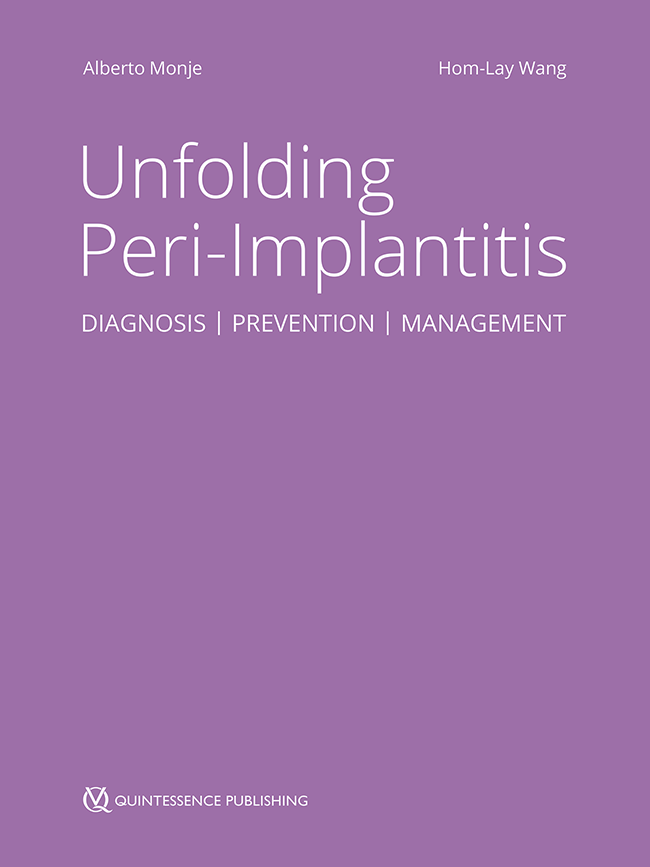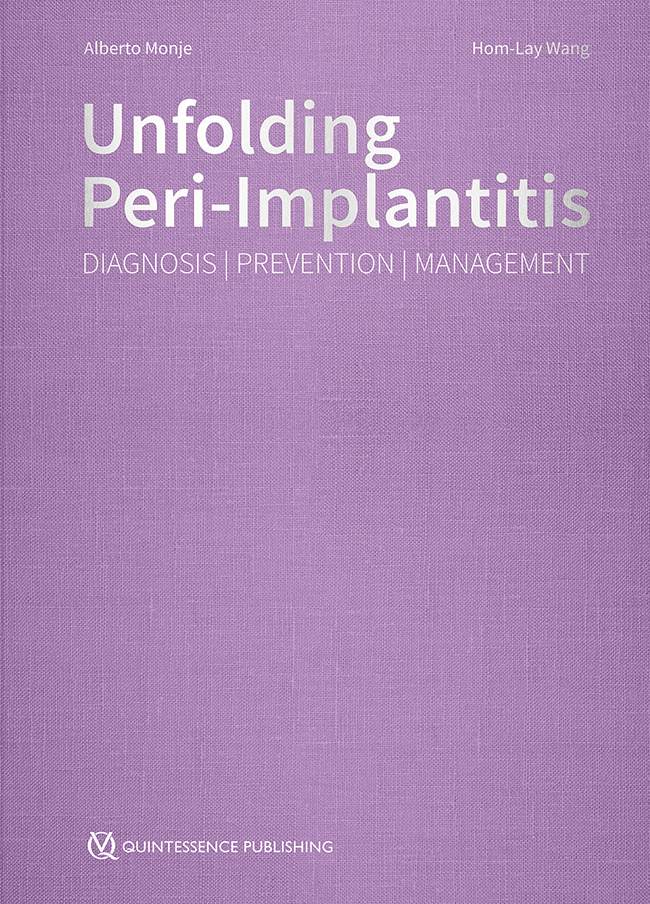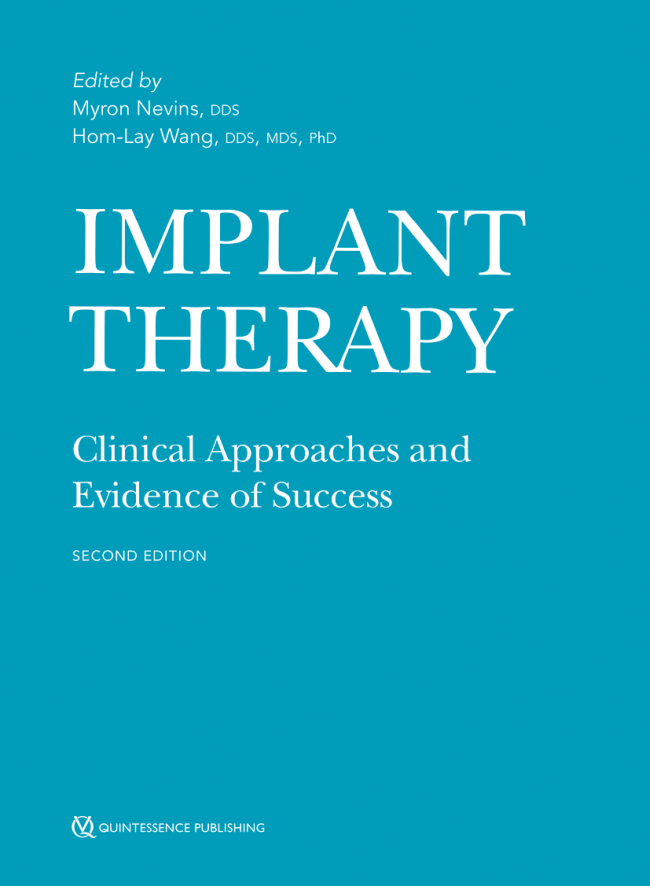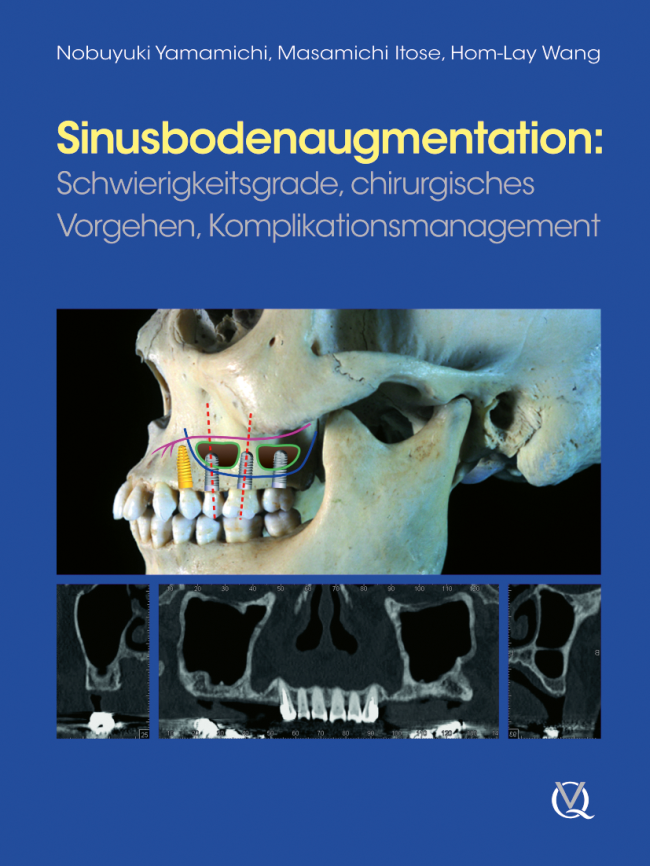International Journal of Periodontics & Restorative Dentistry, Pre-Print
DOI: 10.11607/prd.7493, PubMed-ID: 397757127. Jan. 2025,Seiten: 1-23, Sprache: EnglischFerrigno, Nicola / Laureti, Mauro / Alrmali, Abdusalam / Lorenzi, Claudia / Wang, Hom-Lay / Carosi, PaoloPurpose: This retrospective study aimed to compare extended sinus lift and extramaxilla surgical protocols for restoring severely atrophic maxillae with zygomatic implants (ZIs) and evaluate their clinical effectiveness. Materials and Methods: The study includes patients who were treated at a dental clinic in Italy from 2012 to 2022. These patients received fixed screw-retained complete dentures supported by either two or four zygomatic implants (ZIs). The patients underwent a minimum one-year follow-up post-loading, following two protocols: the hybrid and the quad protocol. Digital planning incorporated CBCT scans, intraoral scans, and digital prosthetic plans within implant planning software. Surgical techniques involved extended sinus lift and extramaxilla techniques methods, utilizing the ZAGA approach for ZI placement. Results: The results showed that out of 19 patients with a mean age of 65.3, a total of 56 zygomatic implants (ZIs) and 20 standard implants were used, with no failures observed in either the implants or the definitive prostheses, resulting in a 100% survival rate. According to the ORIS criteria, overall success was achieved in terms of implant stability, sinus health, peri-implant soft tissue condition, and prosthetic function. Only two ZIs (3.6%) exhibited minor gingival recession and moderate thread exposure, which were closely monitored through professional hygiene maintenance. Conclusion: Both the extended sinus lift and extramaxilla protocols demonstrated comparable clinical outcomes and minimal complications in the restoration of severely atrophic maxillae with Zygomatic Implants (ZIs). However, further extensive studies involving larger, multicenter designs and longer follow-up periods are needed to validate and refine these outcomes.
Schlagwörter: Zygomatic implants, dental implant loading, immediate, maxillary sinusitis, extreme atrophic maxillae, retrospective study.
International Journal of Periodontics & Restorative Dentistry, Pre-Print
DOI: 10.11607/prd.7332, PubMed-ID: 392412166. Sept. 2024,Seiten: 1-15, Sprache: EnglischAlrmali, Abdusalam E. / Misch, Jonathan / Melker, Daniel / Al yosuf, Hasan / Chen, Zhaozhao / Wang, Hom-LayThis paper introduces the Continuous Crossing Mattress Periosteal Suture Technique (CMPST), designed to enhance flap adaptation, and maintain the established apical displacement of the flap during various periodontal resective surgeries, particularly restorative-driven (or functional) crown lengthening in multiple teeth at anterior or posteriors areas. This suture technique securely positions the flap apically, just coronal to the bone, anchored at the periosteum, combining the advantages of both continuous and cross-compression sutures without compromising the esthetic results. By eliminating flap mobility, it ensures stable and intimate contact with underlying tissues. Further controlled studies are needed to assess the clinical applicability of this technique compared to other suture techniques.
Schlagwörter: Suture techniques, crown lengthening, esthetics, prosthodontics
International Journal of Periodontics & Restorative Dentistry, Pre-Print
DOI: 10.11607/prd.6568, PubMed-ID: 375521878. Aug. 2023,Seiten: 1-18, Sprache: EnglischWen, Shih-Cheng / Saleh, Muhammad / Alrmali, Abdusalam / Wu, David T / Wang, Hom-LayDespite the various barrier membranes proposed, one of the main challenges for guided bone regeneration (GBR) is space maintenance for large defects as well as ensure adequate blood supply. The presented feasibility case series aims to introduce an original titanium frame (TF) design, customized for each defect, as a modification of well-known principles and materials for GBR, for an enhanced and more predictable horizontal and vertical bone augmentation. Three patients with significant horizontal defects were treated with pre-trimmed TFs to create needed space, a 50%-50% mixture of autograft and bovine xenograft was placed, and then covered with collagen membrane. After 8 months of healing, the sites were reopened, the titanium screws were removed with the frame. An average of 8.0 ± 1.0mm horizontal and 3.0 ± 0.0mm vertical bone gain was achieved at the time of re-entry and implant placement surgery. Bone core biopsy was obtained during the implant placement. Histomorphometric analysis revealed that 42.8% of the sample was new vital bone, 18.8% was residual bone graft particles, and 38.4% was bone marrow like structures. After 3-4 months from implant placement, the implants were restored with provisional crowns and then finalized with zirconia screw-retained crowns. This case series suggests that GBR utilizing TFs with or without collagen membranes can be considered a suitable approach for horizontal and vertical bone augmentation. However, based on only three reported cases, the result should be carefully interpreted.
International Journal of Periodontics & Restorative Dentistry, Pre-Print
DOI: 10.11607/prd.7412 , PubMed-ID: 397757117. Jan. 2025,Seiten: 1-26, Sprache: EnglischMeda, Ramón Gómez / Calatrava, Javier / Misch, Jon / Wang, Hom-LayBone augmentation procedures often leads to coronal displacement of the mucogingival junction, a deficiency of keratinized mucosa, and a reduction in soft tissue height. These challenges complicate the achievement of an ideal peri-implant phenotype. It is known that addressing both the quantity and quality of soft tissue is crucial for the long-term success and aesthetics of implants. This paper introduces a novel technique for peri-implant phenotype modification following bone augmentation, which combines a modified onlay graft (MOG) with an apically positioned flap (APF) performed simultaneously with implant placement. Two clinical cases are presented to demonstrate this approach, highlighting the restoration of the soft tissue environment through a single surgical intervention. The technique resulted in successful outcomes, including increased vestibular depth, keratinized tissue width, and vertical soft tissue volume. The modified onlay graft technique effectively manages soft tissue in post-bone augmentation scenarios, providing an ideal peri-implant phenotype and leading to stable, aesthetic, and functional implant restorations. This method requires fewer surgical interventions than traditional alternatives, minimizing patient discomfort and enhancing overall treatment outcomes.
Schlagwörter: Soft tissue augmentation, free gingival graft, peri-implant phenotype, dental implants
The International Journal of Oral & Maxillofacial Implants, Pre-Print
DOI: 10.11607/jomi.11238, PubMed-ID: 401789983. Apr. 2025,Seiten: 1-22, Sprache: EnglischPozzi, Alessandro / Carosi, Paolo / Lorenzi, Claudia / Chow, James / Wang, Hom-Lay / Gallucci, German O.Objectives: To systematically analyze the accuracy of autonomous dental implant robotic (ADIR) surgery for dental implant placement. Materials and Methods: PubMed, Embase, and Cochrane CENTRAL were searched on February 21, 2024. Any clinical studies with exception of case reports, assessing ADIR accuracy by superimposing pre-op digital planning with post-op CBCT, were included. The risk of bias was assessed, and a meta-analysis was performed using a random-effect model to evaluate linear and angular deviations between planned and placed implants. Results: Data from 6 clinical studies reporting ADIR accuracy in 96 patients with 299 dental implants included (102 in 69 partial edentates, 197 in 27 complete-arch scenarios). The meta-analysis at implant level reported a mean overall accuracy of ADIR of 0.60 mm 95% CI [0.5133; 0.6965] at platform, 0.63 mm 95% CI [0.5663; 0.6909] at apex, and 1.242° 95% CI [1.2182; 1.6320] of angular deviation. ADIR accuracy resulted significantly higher than s- and d-CAIS. Conclusion: Within the limitations of this review, autonomous dental implant robotic surgery has shown to be feasible for placing implants in both partially and completely edentulous patients, achieving consistent mean linear and angular deviations of approximately 0.6 mm and 1.40°, respectively. However, clinical practicality of autonomous dental implant robotic surgery remained cumbersome, with well-trained operators needed to plan and assist ADIR procedures and a technical expert providing backup control.
Schlagwörter: dental implant, implant guides, accuracy, autonomous dental implant robotic, robotic surgery, digital dentistry, meta-analysis
International Journal of Periodontics & Restorative Dentistry, Pre-Print
DOI: 10.11607/prd.7205, PubMed-ID: 3882027731. Mai 2024,Seiten: 1-22, Sprache: EnglischUrban, Istvan A. / Chen, Zhaozhao / Wang, Hom-LayPeri-implantitis, a common complication among patients receiving implant-supported restorative
therapy, often requires surgical intervention for effective treatment. Understanding the specific
configuration of peri-implant bony defect and adjacent bone peaks is crucial for tailoring treatment
strategies and improving outcomes. A decision tree for reconstructive peri-implantitis therapy has been
developed based on the new classification of defect configurations (Class I to V), guiding clinicians in
selecting treatment options, including biomaterials, techniques, and healing approaches. Furthermore,
clinicians are encouraged to consider various factors such as local predisposing factors (such as soft
tissue characteristics, prosthetic design, and implant position in three-dimensional perspective), clinical
factors (surgeon skill and experience), and patient-related factors (such as local and systemic health,
preferences, and cost) when evaluating reconstructive therapy options.
Schlagwörter: bone regeneration, dental implants, peri-implant defect, peri-implantitis, reconstructive therapy
The International Journal of Oral & Maxillofacial Implants, Pre-Print
DOI: 10.11607/jomi.11162, PubMed-ID: 3996951919. Feb. 2025,Seiten: 1-25, Sprache: EnglischKalani, Khushboo / Stuhr, Sandra / Alrmali, Abdusalam / Mallela, Dhiraj / Latimer, Jessica / Wang, Hom-Lay / Saleh, Muhammad H.A.Purpose: Regenerative hard or soft tissue augmentation procedures (ReP) are crucial in dental implant therapy. This study evaluates the frequency, timing, and financial implication of these procedures before and after implant placement, alongside the influence of systemic conditions on the need for additional interventions. Materials and Methods: This cohort included patients who received implants with or without ReP at the University of Michigan Graduate School of Dentistry from 2011-2023. Data on demographics and systemic health conditions were collected and analyzed using univariable and multivariable logistic regression. Results: 4,803 patients (10,247 implants) were included—48.9% of the patients and 21.7% of the implants received at least one ReP. Ancillary ReP was needed for 14.7% of the implants. The most common of these was alveolar ridge augmentation (ARA) simultaneous with implant placement (42.1%) and alveolar ridge preservation (ARP) (26.4). Diabetics showed significantly higher odds of repeating procedures pre-implant (OR=5.47; p=0.016) and required more frequent hard tissue augmentations post-implant (OR=3.58; p=0.006). Cost analysis revealed that ReP constituted 12.9% of the total implant procedure cost. Notably, the mandibular anterior area was the most likely to undergo ReP (OR=2.08; p=0.001). Conclusions: One of every two patients received a ReP. Almost half of these patients received ARA (simultaneous or staged), and 1/4 received ARP. Diabetic patients exhibited significantly higher odds of requiring hard tissue augmentation pre-IP and post-IP. Trends showed a shift towards soft tissue augmentation over hard tissue procedures for managing peri-implant deficiencies.
Schlagwörter: Dental Implants; Regeneration; Alveolar Ridge Augmentation; Costs and Cost Analysis; Prevalence
International Journal of Periodontics & Restorative Dentistry, Pre-Print
DOI: 10.11607/prd.6584, PubMed-ID: 3781985411. Okt. 2023,Sprache: EnglischLin, Yen-Hua / Betancourt, Amanda Rodriguez / Wang, Hom-Lay / Chan, Hsun-LiangSuccessful bone augmentation relies on primary wound closure. Labial frenum is a soft tissue that connects the lip to alveolar mucosa or gingiva. However, frenum may exert biomechanical forces to the wound edge, causing wound instability. The aim of this study is to (1) review the frenum composition and classifications; (2) understand the significance of frenum in wound stability upon bone regeneration. An electronic search was conducted through the three online databases together with manual search on studies published until September 2022. A total of 300 articles were identified and 11 studies were included in this review. Two of the included six studies discovered that 35-37.5% of the labial frenum had muscle fibers. Other studies showed that labial frenum was mainly composed of connective tissue with elastic fibers. There are two widely used classifications for frenum based on morphology and position of attachment. No studies specifically evaluated the impact of frenum on bone regeneration. Frenum location intercorrelated with the amount of keratinized tissue, which could influence wound stability. A modified frenum classification for the edentulous ridge and a decision diagram to manage the frenum is proposed for research and evidenced practice.
International Journal of Periodontics & Restorative Dentistry, Pre-Print
DOI: 10.11607/prd.7503, PubMed-ID: 3980853614. Jan. 2025,Seiten: 1-28, Sprache: EnglischBarootchi, Shayan / Rodriguez, Maria Vera / Sabri, Hamoun / Manouchehri, Neshatafarin / Barootchi, Erfan / Wang, Hom-Lay / Tavelli, LorenzoThis split-mouth trial investigated the efficacy of treating bilateral gingival recessions with either a xenogeneic cross-linked collagen matrix (CCM), or recombinant human platelet derived growth factor (rhPDGF-BB) with a bone allograft (AG). Ten patients were treated with the coronally advanced flap (CAF), either with a CCM, or rhPDGF-BB + AG. The primary outcome was percentage of mean root coverage (mRC) at 12 months. Additional outcomes included clinical, volumetric, patient-reported outcome measures (PROMs) and ultrasonographic assessment of gingival thickness (GT) and position of the buccal bone (uBD). At 12 months, both groups showed significant improvements, with a mRC of 78.6% in the CCM group, and 82.3% for the rhPDGF-BB + AG sites. 3D analysis of both groups showed comparable volumetric gain. CCM-treated sites displayed higher ultrasonographic echogenicity in GT (p<.01) than rhPDGF-BB + AG sites. The rhPDGF-BB + AG group showed greater reduction in the buccal bone dehiscence (mean 2.03 mm, p<0.01), less swelling during the first three days, and slighty greater mean root coverage. CCM and rhPDGF-BB + AG showed to be effective in the treating multiple adjacent gingival recessions. CCM promotes greater gain in gingival thickness, while rhPDGF-BB + AG resulted in a significantly less buccal bone dehiscense.
Schlagwörter: Gingival Recession, Root Coverage, Regeneration, Ultrasonography, Periodontics, Growth factors, Evidence-Based Dentistry, Platelet-derived growth factor, PDGF
International Journal of Periodontics & Restorative Dentistry, Pre-Print
DOI: 10.11607/prd.7422, PubMed-ID: 3970551120. Dez. 2024,Seiten: 1-17, Sprache: EnglischKhayat, Philippe / Aidan, David / Calatrava, Javier / Wang, Hom-LayImplantoplasty involves mechanically modifying the exposed implant surface by removing macro- and micro-structures and is typically considered a resective approach. The potential for bone regeneration with implantoplasty alone has not yet been studied. This research aimed to evaluate long-term changes in peri-implant bone levels without using regenerative materials. 56 patients (70 implants) were included in the study and were followed for up to 10 years, with a mean observation time of 59 months (~5 years). The implants were evaluated retrospectively through a radiographic, as well as clinical (bleeding on probing and suppuration) analysis. Out of the 70 implants, 11 (15.7%) were lost due to disease recurrence and additional bone loss. One implant (1.4%) experienced up to 1.0 mm of bone loss, 15 implants (21.4%) showed no change in marginal bone levels (MBL), and 43 implants (61.5%) gained bone up to 4.8 mm, all without the use of any graft material or membrane. The overall mean MBL change for the remaining 59 implants at the end of the follow-up period (84.3%) was a gain of 1.27 mm. Implantoplasty alone without osseous surgery, flap repositioning, or using graft material or membrane; may be a viable option for managing peri-implantitis defects. However, future randomized clinical trials with larger sample sizes are necessary to validate current findings.
Schlagwörter: Dental implant, peri-implantitis, implantoplasty, peri-implant marginal bone level, bone regeneration







